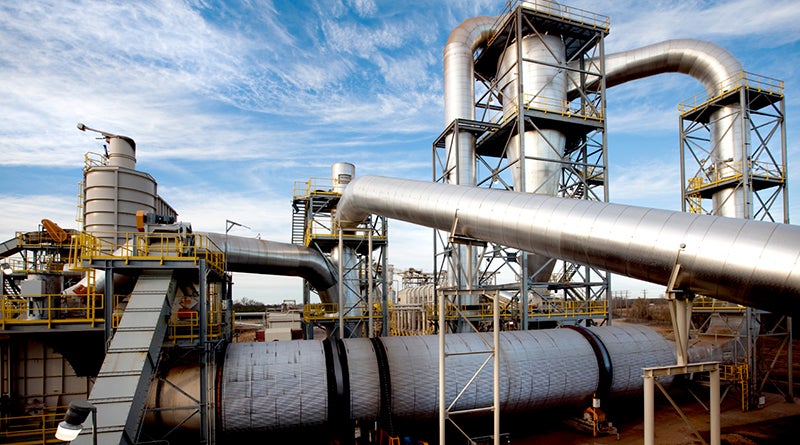Enviva official addresses concerns from CNN article
Published 5:19 pm Tuesday, August 17, 2021

- Enviva produces wood pellets at four mills in North Carolina, to include one near Garysburg in Northampton County. Contributed Photo
|
Getting your Trinity Audio player ready...
|
Part 2 of a 2-part series
GARYSBURG – A recently published CNN article explored the potential impacts of using biomass (wood pellets) as a renewable energy source, and specifically focused on the impact from an Enviva facility located in Garysburg.
The article, published on July 9, raised concerns about air quality, forest conservation, and lack of community benefits stemming from Enviva’s work in Northampton County and throughout the Southeastern United States.
The News Herald reached out to Enviva for a response to concerns raised in the CNN article.
Jacob Westfall, Manager for Communications and Public Relations, explained that the Enviva Northampton plant opened in 2013, the second of Enviva’s four facilities in the state.
“When the (Northampton County) economic development authority invited Enviva to build our facility there, their original plan contemplated multiple large, heavy industrial plants, but Enviva was able to negotiate the purchase of the entire site so as to create a much larger buffer, helping to balance the economic development authority’s objectives of economic growth with limited impact on the community,” explained Westfall.
He also noted that the company employs around 500 full-time workers throughout North Carolina in rural areas that have suffered from high unemployment and low wages. Ninety-seven of those full-time jobs are at the Garysburg plant and the compensation average is close to 40 percent higher than Northampton County’s average wage.
“Enviva’s total economic impact in North Carolina is forecasted to be close to $1 billion annually,” he continued. “Additionally, Enviva’s presence creates at least 2.8 indirect jobs per each direct job we create. To date, Enviva has invested close to $200 million in the Northampton plant.”
In response to claims about unclean air in the county, Westfall provided a chart comparing fine particulate matter (PM2.5) emissions in Northampton County, Raleigh, and Washington D.C. Between 2019-2021, Northampton’s emissions dropped from 8.0 to 6.0, which is just slightly lower than Washington D.C.’s emissions. Raleigh’s emissions ranged above them both from 10.0-7.0.
All three locations are below the federal standard of 12.0. The CNN article, however, noted that some scientists have said that standard is too high.
Enviva, like many other industries throughout North Carolina, is required by the NC Department of Environmental Quality (NCDEQ) to periodically test all emissions points. Westfall said Enviva’s emissions are principally water vapor steam released by wood going through the drying process, and the company does not use chemicals in their process.
“In the case of Northampton, data collected by an air monitoring station installed by the NCDEQ found that the air quality in the area was significantly better than the National Ambient Air Quality Standard (NAAQS) and further demonstrates that PM2.5 doesn’t present a public health risk to the community of Northampton County,” Westfall explained.
NAAQS is a federal standard that determines the level of air quality which does not present a risk to public health. All emissions test and monitoring data is available to the public on NCDEQ’s website.
In addition to addressing the health concerns, Westfall also provided data on Enviva’s local community outreach efforts. On several occasions, the company has partnered with local organizations for events like back-to-school drives and holiday food distributions.
In the last year alone, Westfall added that Enviva has supported the new Northampton Career and Technical Academy of Innovation, Halifax Community College’s Foundation, the construction of a new walking trail and playground in Rich Square, and Halifax Community College’s RAMP East program, which helps prepare students for manufacturing industry jobs.
“Enviva associates provide invaluable input to the (RAMP East) training program curriculum and interview graduating program members for positions that may be available at the company’s Northampton and Ahoskie facilities,” Westfall said. “Several program graduates are now successfully employed by Enviva in those plants, with more currently in the pipeline.”
Enviva has also partnered with Roanoke Electric Cooperative since 2015 on the Sustainable Forestry and Land Retention Project.
The CNN article brought up environmental concerns such as wood pellets not being a true renewable energy source, over-foresting, and endangering old growth forests. To those points, Westfall explained that Enviva abides by a Responsible Sourcing Policy which includes only sourcing trees from land that will be reforested afterwards and not purchasing wood from old growth forests or other high conservation value sites.
“All of our wood, no matter what form it takes, is low-grade wood,” he explained. “Enviva creates an additional market for private forest landowners to sell their low-value wood, such as thinnings, limbs, tops, or low-grade trees (deceased, gnarled, crooked) – that would otherwise go unused – as an incentive to keep their land as forests. We’re talking about material that is a relatively small source of revenue for a landowner, and therefore not driving their decision to harvest in the first place.”
The company also has a “Track & Trace” program which monitors exactly where all the wood is sourced from, and in 2015, they established a $5 million Forest Conservation Fund to contribute to the protection of ecologically sensitive areas.
“Multiple third-party data demonstrate that an increased demand for forest products has resulted in more forest inventory in the U.S. Southeast, where all of our sustainable wood biomass grows. During the last 20 years, even after accounting for all of the forest uses by the forest products industry, forest growth has exceeded removals by nearly 50 percent,” Westfall concluded.

